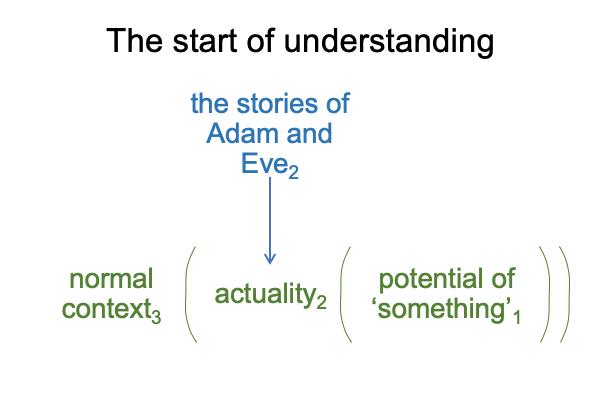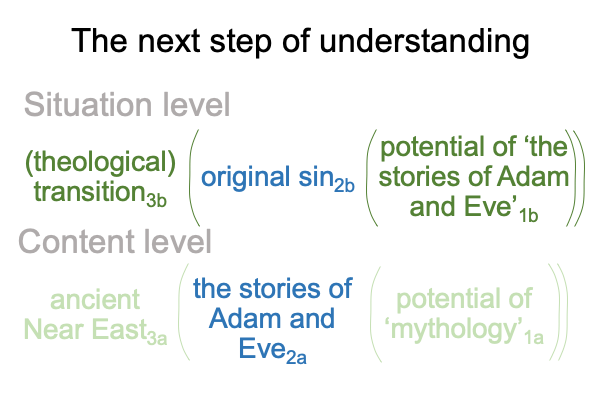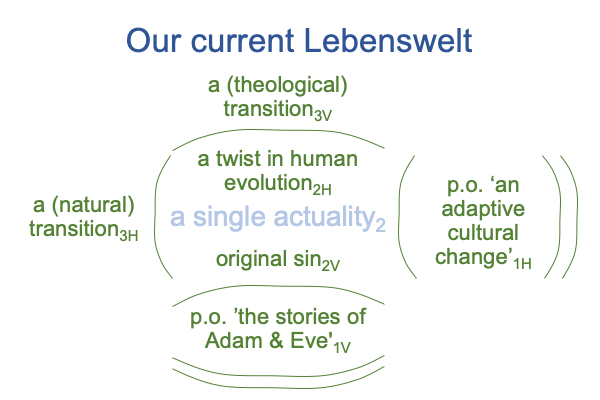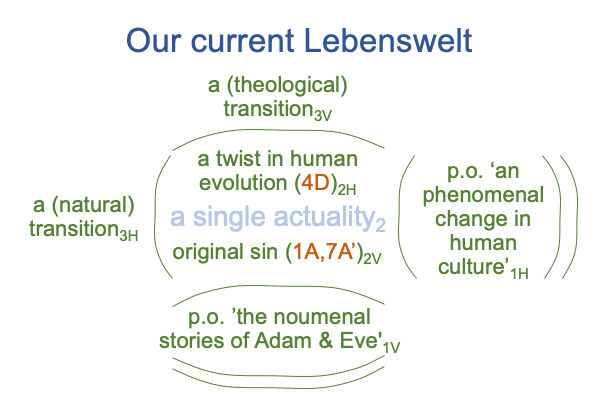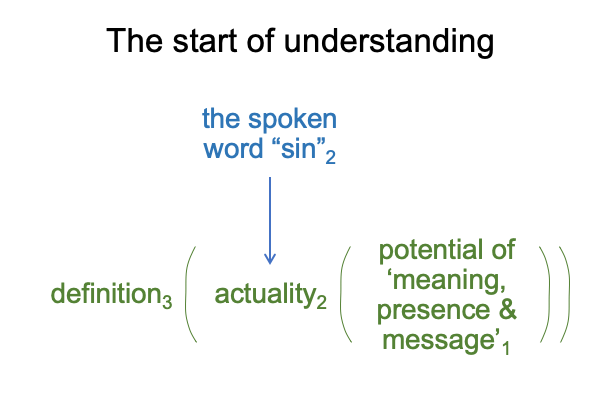Looking at Loren Haarsma’s Book (2021) “When Did Sin Begin” (Part 9 of 21)
0061 Chapter two is titled, “Creation, Evolution and Divine Action”.
Haarsma asks (more or less), “If the scientific evidence for human evolution is correct, then what does that imply about God’s action in intending, creating and blessing humans?”
I expand the query, asking, “If the scientific evidence for evolution is correct, then what does that imply about God’s creative action depicted in the first chapter of Genesis?”
0062 Obviously, the scientific evidence implies that God’s action in creating the world and humans is irrelevant.
Haarsma labels this situation, “dissonance”.
0063 Indeed, dissonance characterizes intersections.
I start with the evolution of the planet and life2H and the Creation Story2V.
The single actuality is the world.
The world includes the Lebenswelt that we evolved in.
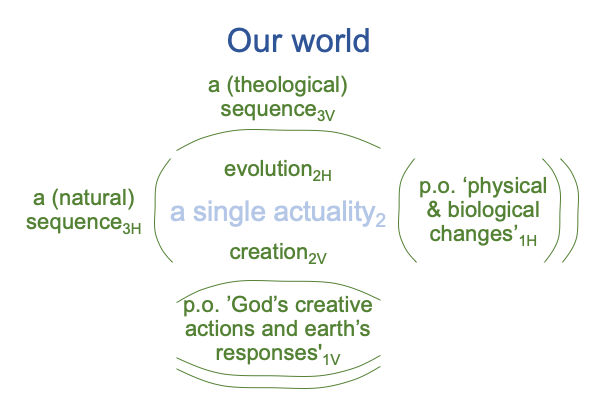
This intersection between evolution2H and Genesis 12V is packed with accidental and essential contradictions. Theologians are capable of distinguishing essential from accidental.
For example, one essential contradiction is this: Each narrative presents a sequence of events in the realization of our world. But, each sequence is unique. How can a Genesis day be the same as an evolutionary epoch? Yet, the two sequences are drawn into a single actuality. They are stuck together in a mystery. I call that mystery, “the world”.
0064 Plus, there is a world within the world.
Genesis 1:26-31 portrays the intending, the creating, the blessing and the feeding of humans as well as the animals that humans keep. This implies that human evolution actually associates to our world, rather than our current Lebenswelt.
If I consider the intersection of all of evolution2H and the Genesis Creation Story2V, I arrive at configuration similar to the intersection of human evolution2H and Genesis 1:26-312V.
The single actuality is the Lebenswelt that we evolved in.
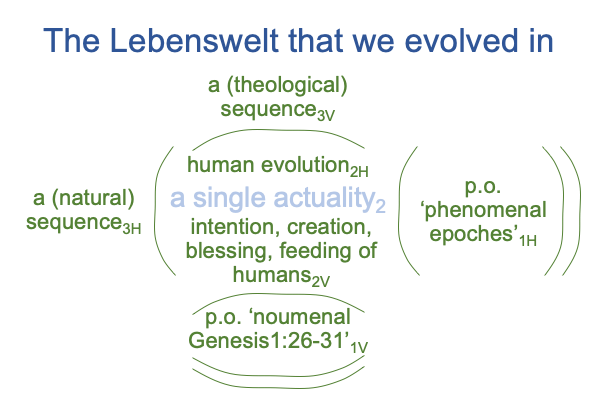
0066 Once these associations are made, then original sin2V binds to a twist in long-established trends in human evolution2H. Since this twist2H does not immediately alter prehistoric natural history or human genetics, the twist must be a cultural adaptation.
The single actuality is our current Lebenswelt.
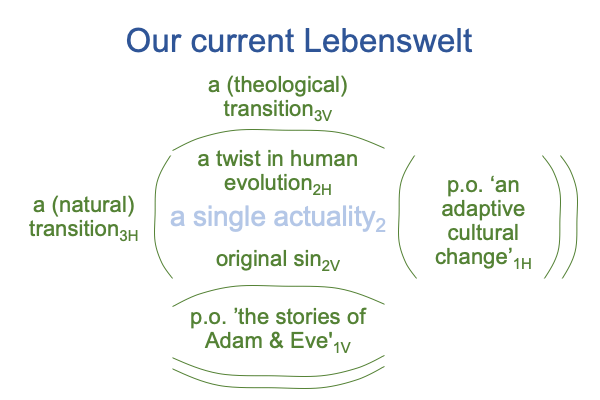
0067 These intersections do not speak to us of dissonance, per se.
These intersections speak to us of mystery.
A mystery contains irreconcilable contradictions.
0068 One task of the theologian is to separate the accidental and the essential contradictions, in order to clarify the mystery. This is hard work. A mystery cannot be fully explained, partially explained or declared unexplainable. A mystery cannot be resolved by sensible construction. A mystery evokes social construction.
See the e-work, A Primer on Sensible and Social Construction.
0069 A mystery provides a message. The message is clear. A single realness coalesces from two disparate actualities. The two nested forms are bound. In this message of unity, the normal contexts and the potentials cannot be regarded as fully independent. Two nested forms bind into a mystery.

